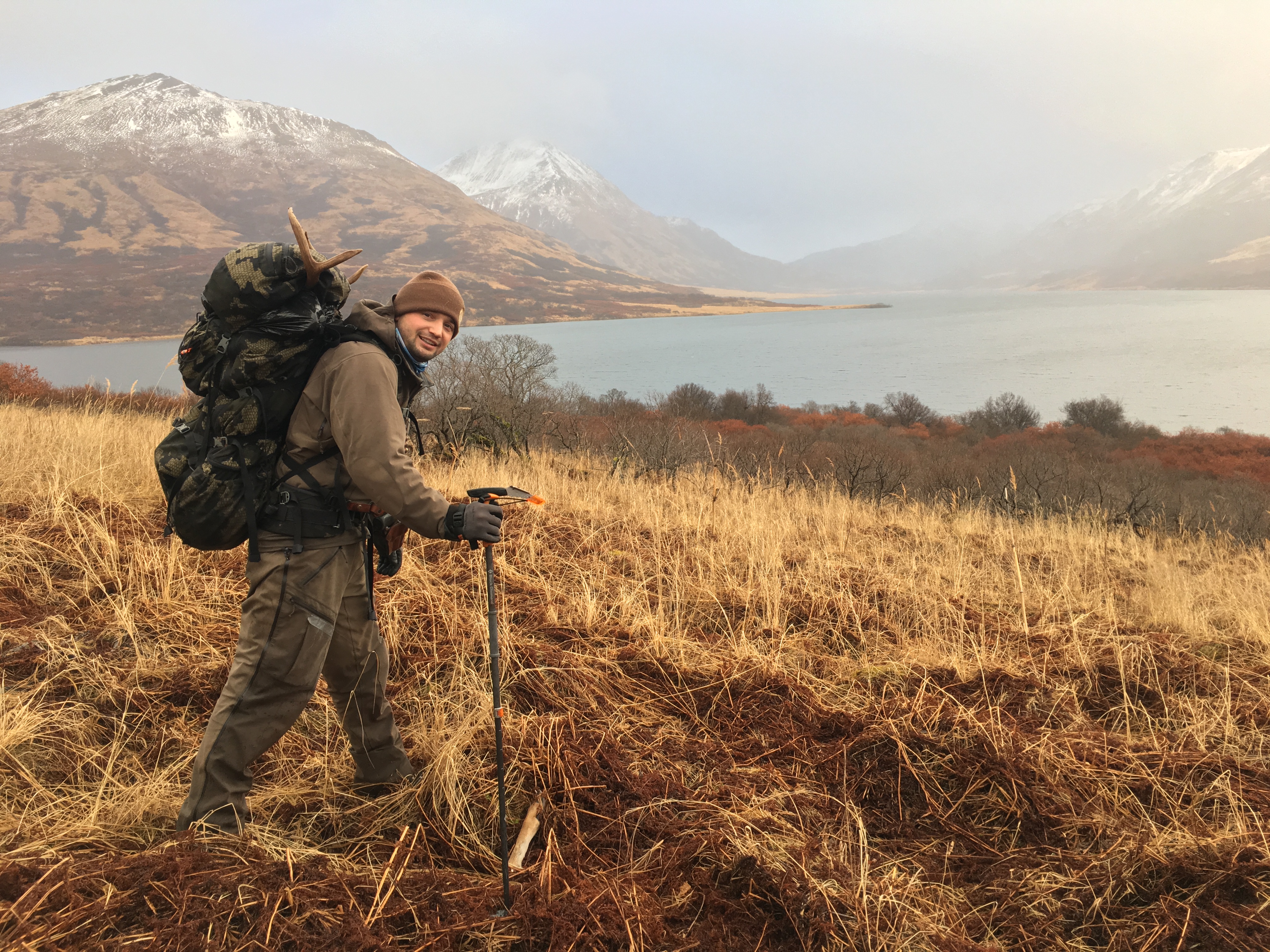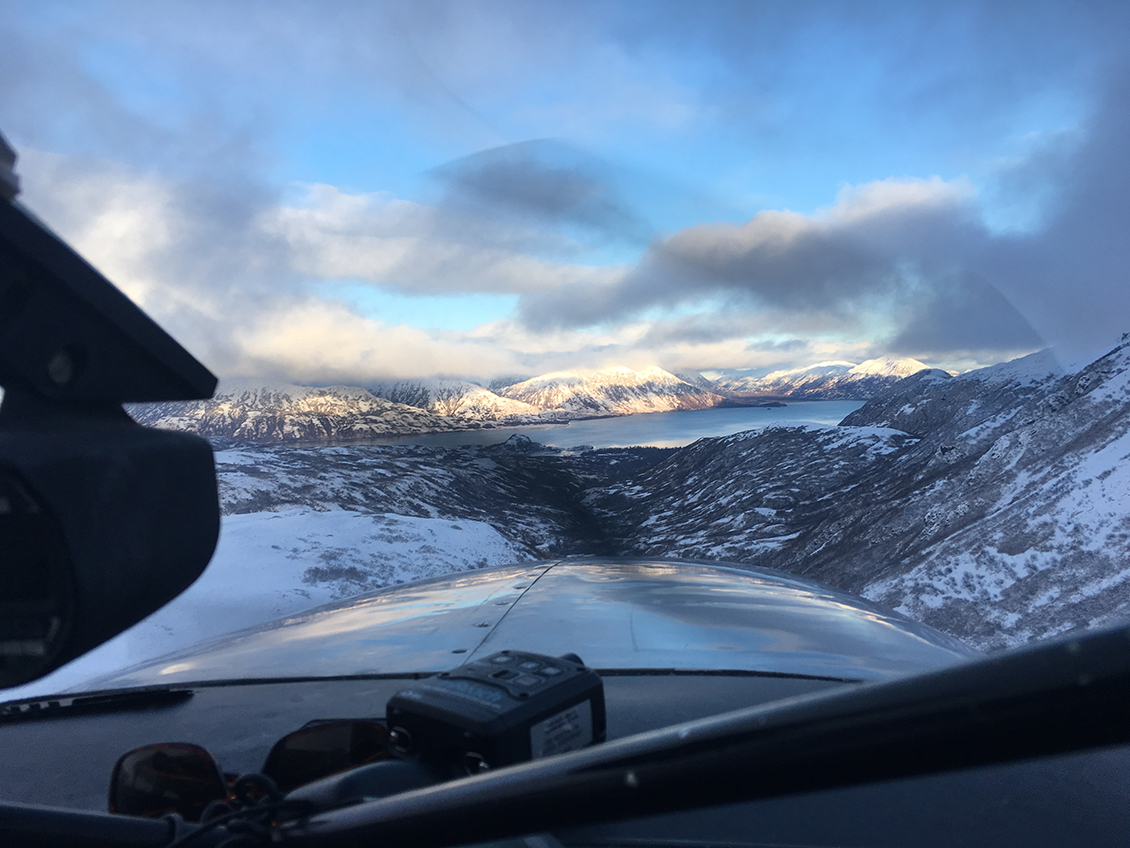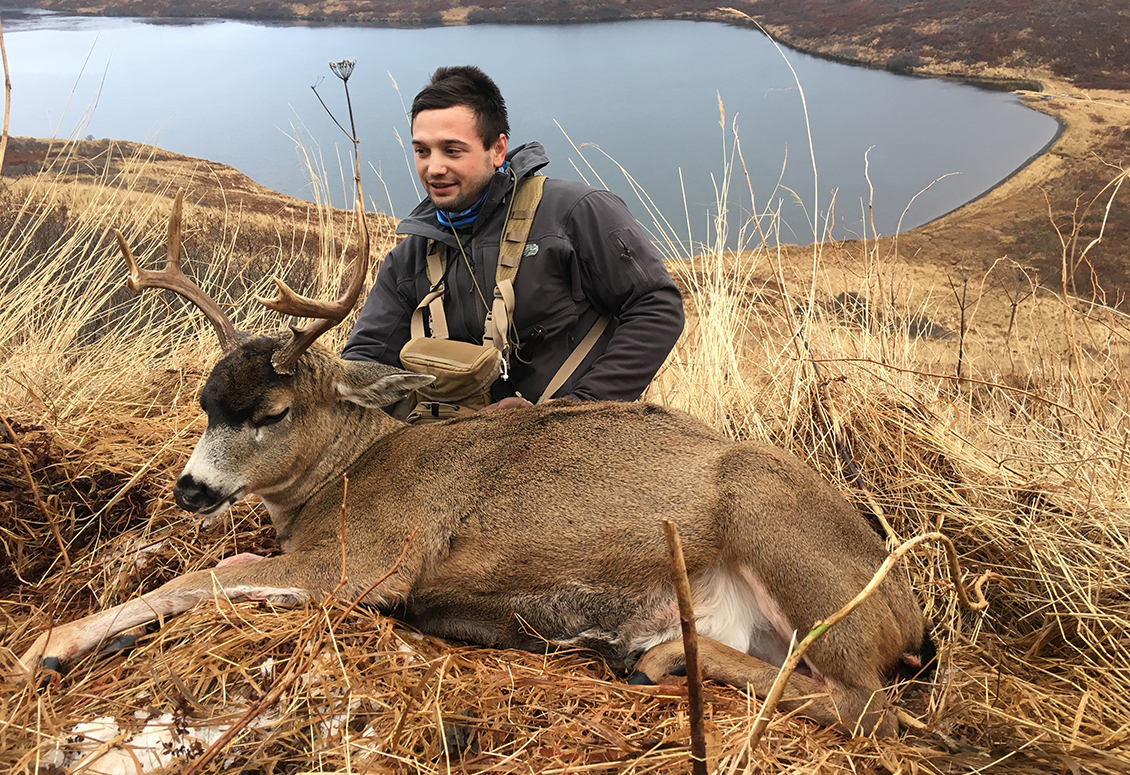An Alaskan Adventure - Kodiak Island Blacktail Deer
As we closed in on the beach all, I can see was boiling brown. It looked like there we freaking deer everywhere on the beach. The first thing I remember about hunting was dad telling me to keep the barrel in a safe direction and to follow him….
Couldn’t believe he trusted me with a rifle at 8 years old…and to hold it on my own. Respect was given at an early age. He looked me in the face and told me, “Shoot the biggest one you see.” I nodded, put the crosshairs on the buck and let it rip!Preventing cookies from being stored on your device may interfere with your ability to view video content.
You can adjust your cookie setting by clicking the button below.
That moment changed my life forever. I was first a fishermen. Then immediately became a hunter. It’s only now that I’ve realized what being a true sportsman is. 20 years later I find myself sitting on a plane en-route to Kodiak, famous blacktail deer location known for its big bears and buff beach dwelling bucks. Jumping on the bush plane at a seaside dock I knew I was in for a treat. Late season hunting can produce some of the best bucks on Kodiak - aka “The Rock”. Winter weather and colder temps bring on the rut, snow fall covers herbaceous alpine food and forces deer into lower country concentrating them to elevations more suitable for day trips from base camp.
There are many ways to hunt blacktail deer. Success varies depending upon style, time of year, and most importantly winter kill. Biologists say that hunters have no real impact on deer numbers. Bears don’t have much of an impact either. The biggest single killer of deer is winter. Tough winters (deep snow fall and freezing rains) force deer to forage along the beach of the coast and low country where they don't have to expand as many calories searching for food versus waiting for sea kelp and tides to uncover nourishment from the ocean. Over a 10 year period according to pilots and transporters, deer numbers are good. Although last year was a rough winter so they say. With the rut coinciding with some of the Islands first snow falls, the big rutting bucks lose many calories they need before the toughest portion of winter. With luck, some are able to bounce back and can get just enough food in their system to get them through deep snowfall.
That being said, some of the younger bucks don’t rut as hard and expend less energy chasing does. This leaves the “Rock” with plenty of “Big Forkies” and mid-range bucks for the following season. Trophy hunting is in the eye of the beholder. Currently, you are allowed 3 dee - first portion of the season is bucks only and as the season progresses the tags become open to any deer. Many Alaska locals spend “big bucks” to charter planes and fly around the Island and want to pack their freezers with as much meat as possible. Other hunters are happy with the experience that Kodiak provides and are good with just one “MONDO” buck… I take a little from all the hunting chapters and try my best to focus on the entire adventure and explore as much as I can while filling the freezer and making a little less wall space in my home.
There are several ways to target mature deer depending on style of hunt and time of year. Some hunters like the early season - chasing one big buck in the high country above tree line. This is a backpack style hunt and basically you can only take one deer. You can rent cabins and chase after rutting bucks as the season progresses with calling and rattling techniques in the mid-season. You can charter a boat and hunt along the shorelines glassing the open fields looking for deer. Or you can get dropped with a nice base camp, a bear fence, and all the accouterments that keep you happy sleeping in a tent. So many ways to chase these blacktail butterballs. Did I mention they are some of the most delectable meat in Alaska? Well they are….
I decided to target the later portion of the season post rut/end of the rut/secondary rut. Big bucks tend to be lower right at the snow line eating as much food as possible and keeping an eye and their nose towards any of the last receptive does (mainly young deer and fawns) that may come into estrus. With a shorter light cycle, deer will move all day long. Getting light around 9:30 am and complete darkness around 4 pm presents logistical challenges of harvesting and getting a deer back to base camp. Later season also provides a better chance at not losing a buck overnight to a hungry bear because many of the bruins have called it for the winter and head into hibernation. Although last year, my wife and I saw quite of a few big bears at our kill sights around Thanksgiving day.
This year I only spotted one bear from the air. He was feeding on a nearby salmon stream and no concern of the Dehavilon Beaver we were flying in. Never spotted that big boy on the ground but we knew he was there. I tagged two bucks within the first two hours of the hunt and the spent most of the next day glassing from base camp, slicing and dicing my bucks, and looking for a nice mature deer to “tag out” on. On the third day, I was up and out of the tent well into dark - not that tough to get out of the tent at 800 am though. Basically sleeping in and waking up to blacktails cruising the hill sides all around the tent. I noticed a rather large “big fork” within striking distance of camp. He appeared to be the biggest bodied most mature deer within glassing distance of our location. There were a few other smaller forkies and a couple of branched bucks, but none of them looked as big as this bad boy. I figured I’ll let the other ones grow and come back next year for a 4x4 mondo buck of my dreams.
The chase was on! Getting the wind right was my first priority, second only to moving slowly and appearing “non-threatening”. You have to remember these deer seldom see people and the only major predator they look for is monster Volkswagen size bears that can’t move as quickly as they themselves. I’ve found moving very slowly I can almost walk directly up to deer within that 150-250 yard rifle shooting range. Well that game plan didn’t work so well on this mature buck, guess he knew better than to sit there and watch a Kuiu clad hunter walk right up to him and poke him with a bullet. He was with a doe but still looking for danger, go figure. The new game plan would be to circle up mid-mountain above tree-line and descend on the unknowing buck. An hour later I spotted him sneaking into an alder patch. The rolling mountainous terrain allowed me to close the distance in a hurry.
I laid my pack down and looked for movement. Like a ghost I caught him slipping through the brush. He stopped in an opening and stared straight at me. I ranged the brush line at 250 yards and knew my 270 Win topped with a 3x9 scope could make the shot without having to do any fancy bullet drop compensation formulas…(like I can do those anyway). I squeezed off the trigger and thuuuuwaaap, he dropped in his tracks. I was more than pumped to say the least shaking and experience buck fever after the shot. Didn’t understand what happened to me with this deer versus the first two I shot. Was it the body size? Was it the big fork? Was it the thrill of the chase? When I dropped down into the alder infested bottom and laid my hands on the buck I knew immediately why….. all of the above.
I had a mile or two trek back to camp, giving me ample time to reflect on the adventure, exploring knew country, and making memories that will last me another 20 years or so. I thought back to all the hunts I’ve been a part of on Alaska’s biggest Island. I remembered my first buck with my dad, my wife’s first buck, and all the beautiful deer I was fortunate enough to harvest on the trip. This place is overwhelming, and I know with all my heart I’ll be back sooner than later. Who knows, maybe next year I’ll track down that buck of lifetime. One thing is for sure, the adventure never ends.







